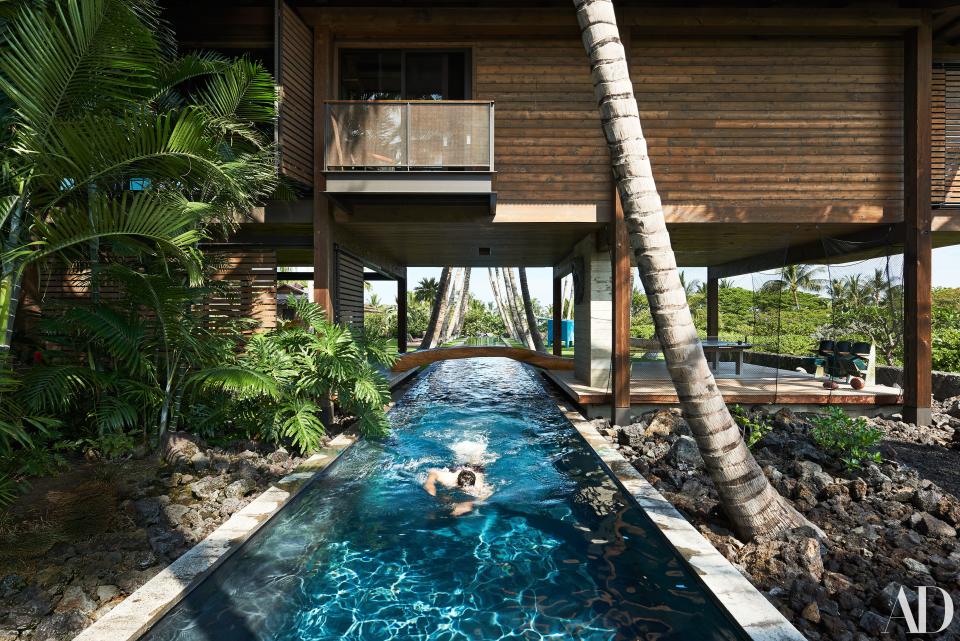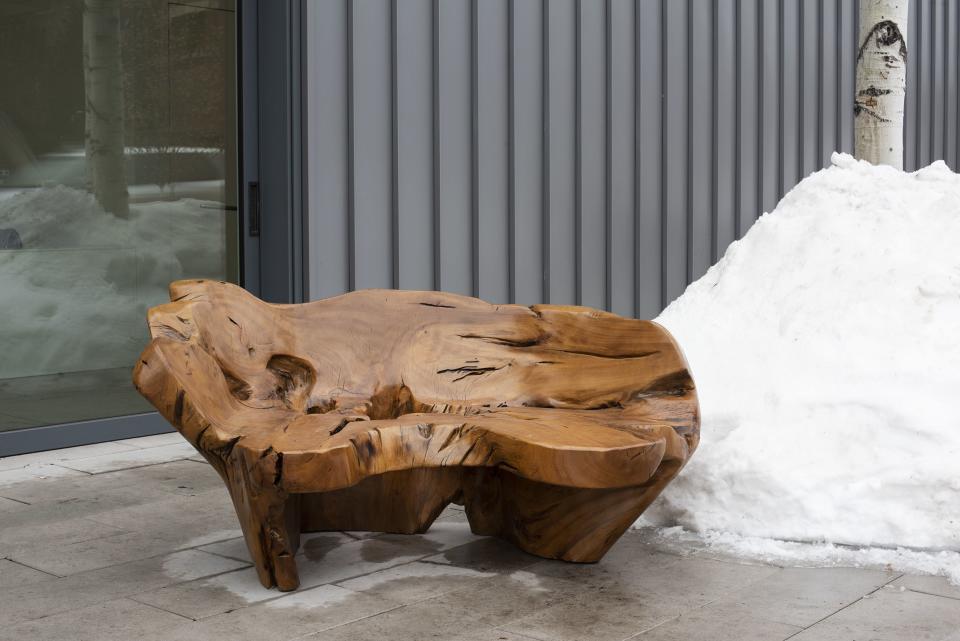Hugo França's Natural Wood Furniture Arrives in the Rockies
Those who don’t believe in parallel universes, enter Marianne Boesky Gallery’s latest show with an open mind. Staged at its Boesky West outpost in Aspen, Colorado—which opened in 2017—"Tropical Molecule" brings together the divergent yet eerily interconnected works of designer Hugo França and artist Thiago Rocha Pitta, two Brazilians who bring the natural world alive through sculptural furniture and ethereal art, respectively.
França’s works have long been prized by the design set. Crafted from the remains of pequi wood trees salvaged from (now outlawed) deforestation measures in Brazil, his raw, craggy furniture preserves this rare wood in unconventional forms. “Dealing with this ancestral wood is a kind of archaeological work for me,” explains França. The 63-year-old designer is still creating more than 100 pieces per year—including a new bench making its debut at Boesky.

Twenty-five years his junior, Rocha Pitta has a similar affinity with nature, which is realized through watercolors and frescoes in "Tropical Molecule." Though the pair did not meet until recently—amid a discussion of collaborating on work for Rocha Pitta’s new studio and foundation in a rural region of Brazil called Petrópolis—their work focuses on many of the same touchstones: texture, nature, and the power of what endures, defying conventional modes of making in the process.
“When we think through exhibition ideas for Boesky West, we always consider the context,” says Adrian Turner, a partner at the gallery. “Experiencing art in Aspen, with its incredible landscape, is very different than seeing shows in New York.”

Both artists’ work have clear ties to the natural environment. The fluid shapes in Rocha Pitta’s watercolors and frescoes represent microorganisms, while França’s sculptural forms lionize the stateliness and texture of the pequi wood. “The cyanobacteria that are seen in Thiago’s watercolors are the same organisms responsible for the physicochemical processes that originate the wood, my raw material,” França says.
“Although Aspen is quite different than the landscapes of Brazil, there is this other layer in seeing their work here,” Turner adds of the wintry climate and how it plays with these colorful, tropical works that were born a hemisphere away. As the team installed the show, they considered sight lines through the windows onto the icy landscape, and even where pedestrians might glance passing by. Outside the gallery’s stone-gray exterior, França’s new bench sits aside a heap of snow.
The day of installation, Rocha Pitta is charmed by the interconnectedness of it all. “If we consider that all the carbon chains of the wood of [Hugo’s] sculptures were structured by dozens, perhaps hundreds, of years of photosynthesis,” he says, “you realize there is a continuity between both that really matters.”

